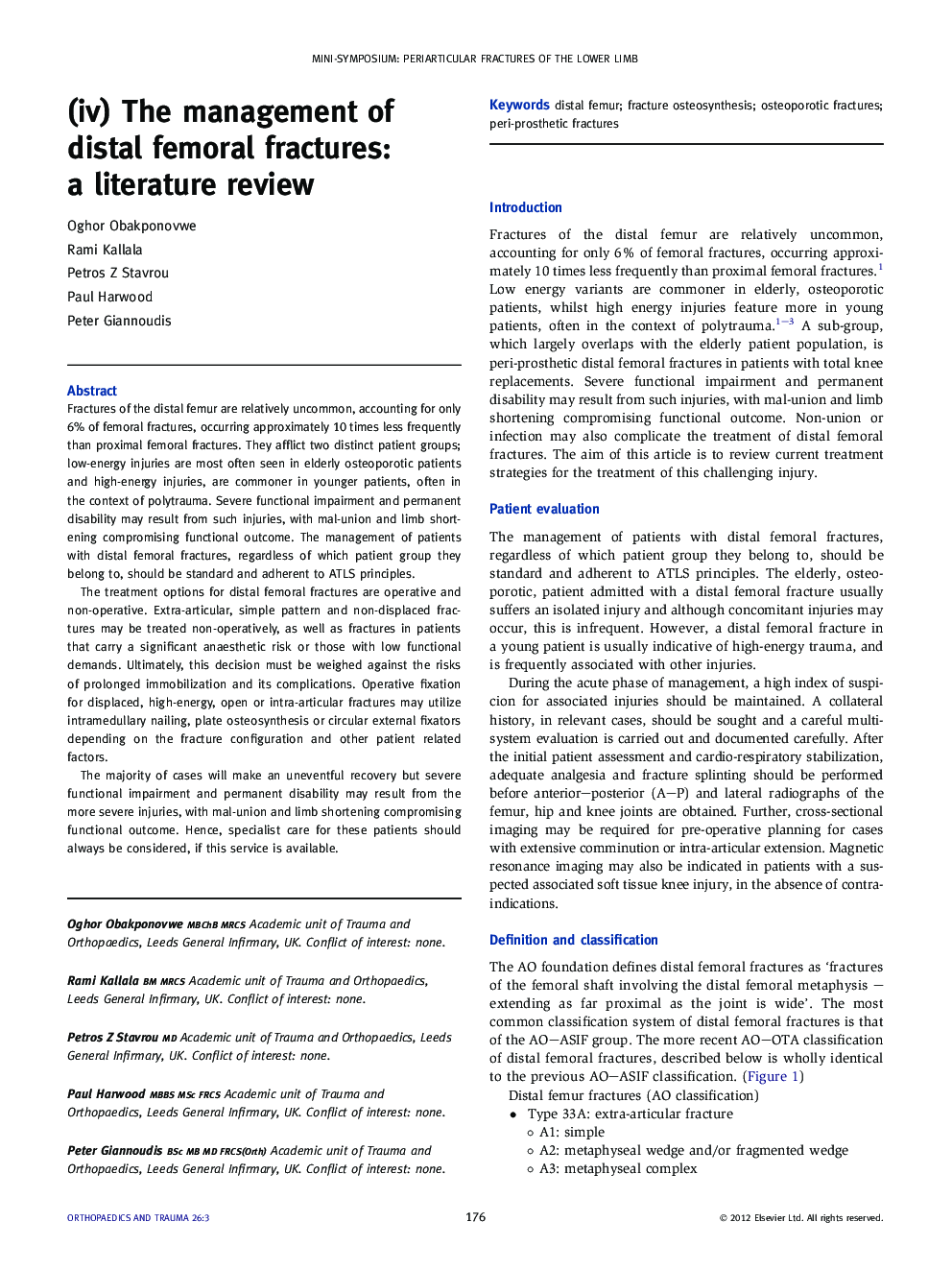| Article ID | Journal | Published Year | Pages | File Type |
|---|---|---|---|---|
| 4080508 | Orthopaedics and Trauma | 2012 | 8 Pages |
Fractures of the distal femur are relatively uncommon, accounting for only 6% of femoral fractures, occurring approximately 10 times less frequently than proximal femoral fractures. They afflict two distinct patient groups; low-energy injuries are most often seen in elderly osteoporotic patients and high-energy injuries, are commoner in younger patients, often in the context of polytrauma. Severe functional impairment and permanent disability may result from such injuries, with mal-union and limb shortening compromising functional outcome. The management of patients with distal femoral fractures, regardless of which patient group they belong to, should be standard and adherent to ATLS principles.The treatment options for distal femoral fractures are operative and non-operative. Extra-articular, simple pattern and non-displaced fractures may be treated non-operatively, as well as fractures in patients that carry a significant anaesthetic risk or those with low functional demands. Ultimately, this decision must be weighed against the risks of prolonged immobilization and its complications. Operative fixation for displaced, high-energy, open or intra-articular fractures may utilize intramedullary nailing, plate osteosynthesis or circular external fixators depending on the fracture configuration and other patient related factors.The majority of cases will make an uneventful recovery but severe functional impairment and permanent disability may result from the more severe injuries, with mal-union and limb shortening compromising functional outcome. Hence, specialist care for these patients should always be considered, if this service is available.
